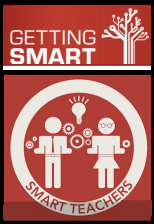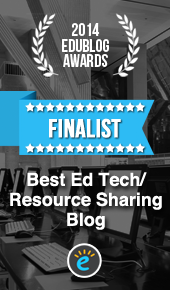Virtual Reality is about to find it’s way into schools and classrooms with a new layer of interactivity from ThingLink! ThingLink VR will allow educators to create an affordable interactive learning environment to immerse students in learning experiences like never before. ThingLink is evolving from image and video annotation to 360 content, which gives educators a larger canvas to create virtual learning experiences.
"We want to make mobile VR an engaging platform for storytelling and learning." -Ulla Engestrom, founder and CEO of ThingLink
About ThingLink Virtual Stories
Students wear VR headsets and an iOS or Android phone to explore a ThingLink virtual story. They navigate through an interactive learning experience by turning their head and aligning a pointer to a ThingLink tag to explore details more closely. Pointing to a tag allows users to watch a video, view a photo, or read more about a location within the 360 content. In addition, tags collect data to measure student engagement within the learning experience
An Affordable and Accessible Option
It has been predicted that 2016 will be the year when Virtual Reality goes mainstream in Education, largely due to affordability. The only equipment needed to immerse students in a ThingLink VR learning experience is an Apple or Android mobile device and an affordable headset. Playback is supported without the need for a special app. Use of affordable equipment is a factor that can help level the playing field for many students.
ThingLink Virtual Reality in the Classroom
Since Higher order skills such as communication, collaboration, and critical thinking are best learned at the human level, educators can redesign face-to-face instructional time to embrace the VR experience.

Those who are hesitant or unable to extend this type of learning beyond the classroom walls might choose to implement interactive VR learning experiences through stations built into the differentiated classroom. It's fair to say that students immersed in interactive VR learning experiences are likely to stay on task and become stakeholders in their own learning while the teacher works directly with other students through small group or 1-1 instruction.
Think about the possibilities for educators across all grade levels for using VR technology to engage students in topics by offering a deeply immersive sense of location and time. This technology allows users to experience a situation like they were really there by making connections with the brain.
Imagine the Powerful Possibilities
There are many powerful possibilities for using interactive VR content in the classroom. The tool will allow students of all ages to jump into action, as well as engage in real-world learning experiences. One of our first projects at ThingLink will be to create virtual tours about sustainable urban systems that can be shared among city officials around the world.














3 comments
I really love the potential of VR. I think there are few more engaging experiences and everything I have tried along those lines has really impressed me. Viewers like Google Cardboard are very cheap, but unfortunately smartphones are not. As such, this is my only hesitation for how much it will take off in 2016. Will it span the tech equity gap?
ReplyMany middle and high school students have their own cell phones these days, but not all. And then there is elementary. Will younger students miss out on the VR movement because it requires a smartphone? I know there are ways around that if parents donate old smartphones or if students get to use a parent's phone for a few minutes at home, but that is still going to be kind of hit and miss. As a former elementary teacher that concerns me. Any thoughts?
I agree with you Jonathan, there are still economic obstacles related to the use of mobile devices for learning, but I think 2016 is a year when we can reach many students and perhaps pave the way to find solutions for universal access to mobile technology in education.
ReplyMomentum continues to grow rapidly to support the use of mobile devices in schools. Districts are investing in improved wireless infrastructures, and mobile hot spots keep popping up around us. The e-Rate overhaul in 2014 raised the program’s annual spending cap from $2.4 billion to $3.9 billion and prioritized the support for broadband service and wireless networks to improve infrastructure. Infrastructure in some contexts can also be taken to include learning devices and digital content.
And somehow, more and more people are walking around with SMART phones than ever before. I am often surprised when I ask the students in my own economically diverse elementary school about outside access to technology and they pull their iPhones out of their pockets.
I think we are getting closer.
The VR Headset are designed to be compatible with all major smartphones and usually fits every eye as they come with adjustable IPD and object length. This will make it suitable to all as you can adjust the focal length and object length to suit your vision and face.
Reply